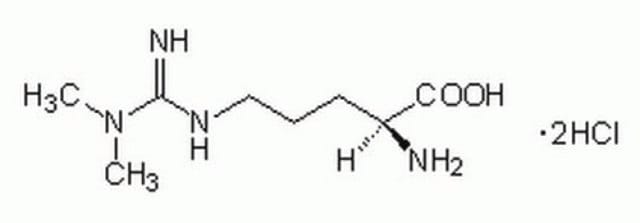494437
Methanol
≥99.93%, BioReagent
Synonym(e):
Methylalkohol
About This Item
Empfohlene Produkte
product name
Methanol, BioReagent, ≥99.93%
Dampfdichte
1.11 (vs air)
Qualitätsniveau
Dampfdruck
410 mmHg ( 50 °C)
97.68 mmHg ( 20 °C)
Beschreibung
gradient analysis <= 0.005 254nm
Produktlinie
BioReagent
Assay
≥99.93%
Form
liquid
Selbstzündungstemp.
725 °F
Expl.-Gr.
36 %
Verunreinigungen
≤0.0002 meq/g Titr. base
≤0.0003 meq/g Titr. acid
≤0.02% (water)
Abdampfrückstand
<0.0003%
Farbe
APHA: <10
Brechungsindex
n20/D 1.329 (lit.)
bp
64.7 °C (lit.)
mp (Schmelzpunkt)
−98 °C (lit.)
Löslichkeit
benzene: miscible(lit.)
ethanol: miscible(lit.)
water: miscible(lit.)
Dichte
0.791 g/mL at 25 °C (lit.)
λ
H2O reference
UV-Absorption
λ: 203 nm Amax: 1.0
λ: 210 nm Amax: 0.60
λ: 220 nm Amax: 0.30
λ: 230 nm Amax: 0.15
λ: 240 nm Amax: 0.05
λ: 260-400 nm Amax: 0.01
Format
neat
SMILES String
CO
InChI
1S/CH4O/c1-2/h2H,1H3
InChIKey
OKKJLVBELUTLKV-UHFFFAOYSA-N
Suchen Sie nach ähnlichen Produkten? Aufrufen Leitfaden zum Produktvergleich
Verwandte Kategorien
Allgemeine Beschreibung
Anwendung
Angaben zur Herstellung
Signalwort
Danger
H-Sätze
Gefahreneinstufungen
Acute Tox. 3 Dermal - Acute Tox. 3 Inhalation - Acute Tox. 3 Oral - Flam. Liq. 2 - STOT SE 1
Zielorgane
Eyes,Central nervous system
Lagerklassenschlüssel
3 - Flammable liquids
WGK
WGK 2
Flammpunkt (°F)
49.5 °F - closed cup
Flammpunkt (°C)
9.7 °C - closed cup
Analysenzertifikate (COA)
Suchen Sie nach Analysenzertifikate (COA), indem Sie die Lot-/Chargennummer des Produkts eingeben. Lot- und Chargennummern sind auf dem Produktetikett hinter den Wörtern ‘Lot’ oder ‘Batch’ (Lot oder Charge) zu finden.
Besitzen Sie dieses Produkt bereits?
In der Dokumentenbibliothek finden Sie die Dokumentation zu den Produkten, die Sie kürzlich erworben haben.
Kunden haben sich ebenfalls angesehen
Unser Team von Wissenschaftlern verfügt über Erfahrung in allen Forschungsbereichen einschließlich Life Science, Materialwissenschaften, chemischer Synthese, Chromatographie, Analytik und vielen mehr..
Setzen Sie sich mit dem technischen Dienst in Verbindung.








